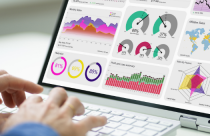7 Aspects You Need to Know About Scholarly Publishing

This article features a discussion between several researchers on seven aspects of scholarly publishing.
Participants include Dr. Sang-young Park, a bioethics researcher; Dr. Kanti Kumar, a professor of chemistry; Dr. Lisa Silverstein, an oncology researcher; and Dr. Xiaolin Zhao, a nuclear physics scholar.
Kanti: Lisa, congratulations on publishing your latest article.
Lisa: Thank you Kanti, that’s so kind of you. I must say, sometimes I feel the publishing process is more challenging than the actual research. While it’s great to have so many different channels to consider for publishing, it can be difficult to understand the advantages and disadvantages of each one.
Sang-young: Yes, things have changed so much from when I began publishing at your age. Digital trends are evolving so quickly. Now, even though I am involved in every step of the publishing process, I still feel lost at times. And there are so many conflicting interests. The academic publishing has evolved over the years, and the publishing ecosystem has a lot of diversities including the researchers, funders, libraries, and publishers, along with scholarly societies. These have different positions and varied agendas.
Kanti: Yes, it seems like, despite the common goals of authors, libraries, publishers, and funders, we clash over how to facilitate the communication of research best. What is good in one field is not always good in another. My wife, whom you know is a professor of sociology, deals with very different considerations in her publishing than I do.
Lisa: That’s a good point. As I was working on this article, I learned about “scholarly hygiene”- the number of abusive practices out there is shocking.
Xiaolin: What is scholarly hygiene?
Lisa: I mean making sure that you’re not only avoiding bad research practices, but also bad publishing practices. Good scholarly hygiene means avoiding predatory journals and publishers and making sure you’re correctly citing work and following procedures.
Xiaolin: Ah, yes. Speaking of publishing, we just learned our funders have decided to support OA publishing only. It’s being doctored into our contract, but we have many changes to make. While I support OA, the policy means I’ve had to allocate money from our budget for article processing charges that we hadn’t planned for. It’s been quite the battle.
Kanti: Why do you have to pay? Doesn’t OA mean it’s free for everyone?
Xiaolin: Well, it depends on the business model. I am promoting a partnership where we could do self-archiving OA. My director prefers a publisher that uses “gold” OA, meaning the authors pay. There are many hidden costs in publishing, like acquisition costs and peer review. Moving away from the subscription model means that we need to shoulder some extra costs.
Sang-young: Of course. It’s important to be aware of the pros and cons of the different business models and know who is paying for what. This way you can avoid the predatory traps that Lisa referenced. We often don’t consider the costs involved for peer review, even though we discuss ways of improving it to increase the quality of research often.
Lisa: Is improving peer review the most effective way to increase the quality of research? It seems to me that less emphasis on metrics such as citation numbers would be much more impactful.
Sang-young: How do you propose to measure an author’s impact then if we don’t rely on metrics? Metrics define how and where we publish, and our publishing defines our careers.
Xiaolin: Actually, there is a recent trend towards using altmetrics– evaluating the interaction with research via social media channels. Of course, this has its limits. But it’s an excellent discussion to have.
Kanti: And metrics like journal impact factor work differently in different fields. The humanities have different standards and practices for citation than fields such as ours- which is reflected back in the way metrics look for my wife’s papers compared to mine.
Xiaolin: There are some excellent tools available to help researchers track their impact outside of Impact Factor. Google Scholar, ImpactStory, Altmetric, all of these can be helpful. I also quite like Mendeley Data and PubChem for data sharing.
Lisa: How are you handling the copyright and licensing issues, Xiaolin?
Xiaolin: Oh don’t get me started. We are still working out which creative commons license to use. There are six kinds! And I am learning the difference between copyright and licensing. I didn’t know that you could still have copyright even if a publication is available under license. Understanding copyright is critical for researchers to protect their work. But I am beginning to wish I had an assistant to do it all for me!
Kanti: Oh! I just realized I have a meeting scheduled with my students to discuss monthly progress reports. It was great catching up on the publishing industry, with all of you.
The academic publishing industry is continuously evolving, and being intuned with these changes will help researchers to understand and publish their work in an appropriate journal.









